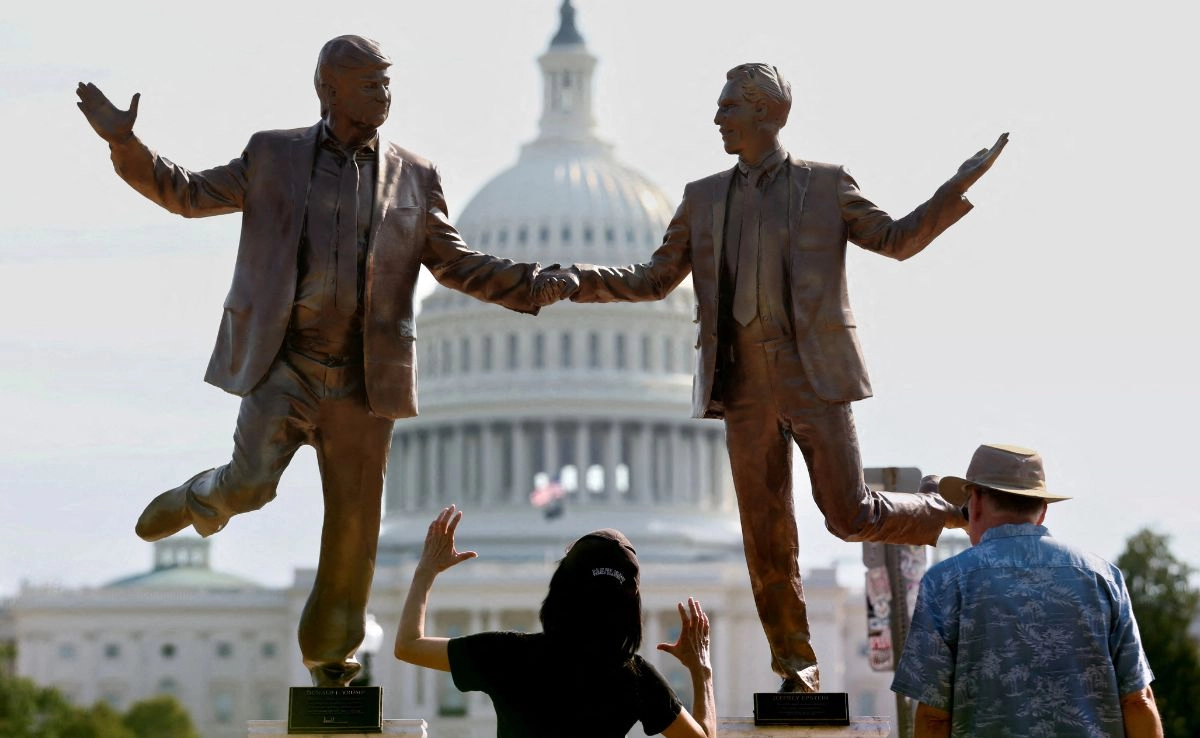A striking and controversial statue depicting Donald Trump and Jeffrey Epstein holding hands has re-emerged in Washington, D.C., stirring significant public interest and debate. The artwork, which initially gained notoriety for its provocative imagery, draws attention to the complex and often contentious relationship between politics and scandal. The statue serves as a visual commentary on the intertwining lives of two figures who have been at the center of intense public scrutiny, each representing different facets of American culture, power, and infamy.
The reappearance of the statue raises questions about the intentions behind its display. Is it a critique of political corruption, a statement on the nature of celebrity, or simply an attempt to provoke outrage? While some view it as a bold artistic expression meant to spark dialogue about the moral implications of political alliances and personal relationships, others criticize it as an irresponsible glorification of individuals embroiled in serious allegations. The statue’s location, once again in the heart of the nation’s capital, only amplifies its potential impact, inviting passersby to confront the uncomfortable realities of power dynamics and social privilege.
As the statue garners media attention and public commentary, it reveals the complexities surrounding the legacies of both Trump and Epstein. Both figures have polarized opinions across the political spectrum, and their connection—however tenuous—has opened the door for discussions about ethics in leadership and the responsibilities of public figures. The artwork serves as a reminder of the darker side of fame and the consequences that can arise from unchecked power. In a time when political discourse is often charged and divisive, the statue stands as a provocative symbol of the ongoing struggles between accountability and celebrity culture.
Ultimately, the statue’s resurgence in Washington offers a unique lens through which to examine contemporary issues of morality, power, and the enduring effects of scandal on public perception. As debates continue to unfold, both in media and among the public, the statue remains a powerful artifact that challenges viewers to reflect on the implications of the figures it represents. Whether seen as an artistic critique or a sensationalist statement, its presence in the nation’s capital ensures that it will remain a topic of conversation well into the future, highlighting the intricate dance between art, politics, and public sentiment.




